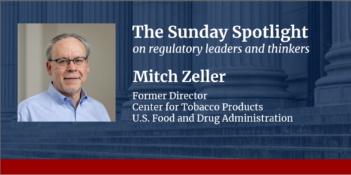
“Chevron deference has created a regulatory landscape where agencies may in some cases do what they want, rather than what the law requires or allows them to do.”
In 1920, in a case called Federal Trade Commission v. Gratz, which involved the construction of the statute that created the Federal Trade Commission (FTC), the U.S. Supreme Court took up the words “unfair method of competition” and said that “[i]t is for the courts, not the commission, ultimately to determine as a matter of law what they include.”
The underpinning of that case was Marbury v. Madison. In Marbury, the Court said that, as a matter of constitutional power and prerogative, “i[t] is emphatically the province and duty of the Judicial Department to say what the law is.” You can draw a straight line from Marbury to Gratz. Both decisions are premised on the fundamental judicial principle that it is up to the courts to say what the law is.
Chevron U.S.A. v. Natural Resources Defense Council takes a diametrically opposed view. Under the rule of Chevron, it is up to the agencies to say what the law is, and the courts should defer as long as the agency is not being “unreasonable.” This reversal led legal scholar Cass Sunstein to describe Chevron as “merely a counter-Marbury for the executive branch.”
It is somewhat surprising how little attention has been paid to the fundamental incongruity between Chevron and Marbury. Chevron abdicates the role that the Court assumed in Marbury, surrendering territory that Justice Marshall definitively claimed for the judiciary in 1803.
This brings me to a further problem with Chevron. The broad application of Chevron deference has created a regulatory landscape where agencies may in some cases do what they want, rather than what the law requires or allows them to do. The doctrine puts foxes in charge of guarding the agency henhouse.
The U.S. Environmental Protection Agency’s (EPA) position in the case Utility Air Regulatory Group v. EPA, which was recently decided by the Supreme Court, is illustrative. In that case, to further a policy objective – albeit a very commendable one – the EPA simply “rewrote” the statutory trigger for entering a pollution control program from 100 tons to 100,000 tons. Although the Supreme Court ultimately upheld the underlying EPA rule, Justice Scalia, writing for the majority, admonished the EPA that its authority to administer the law “does not include a power to revise clear statutory terms.”
I recognize that agencies must have some ability to interpret the bounds of their authority and implement statutes passed by Congress, but as a matter of constitutional principle and democratic prudence, that authority has to be subject to some oversight. The executive branch should not simply be allowed to construe statutory ambiguities – or to fill statutory gaps – unfettered and solely as it sees fit.
That’s part of the problem, but it goes deeper than that. When talking about the power of the executive branch, you have to keep in mind how that power actually is wielded.
It is certainly true that the president is accountable to the electorate, and the people that he appoints to manage his agencies are accountable to him. The problem is that, in the vast majority of cases, the power that Chevron cedes to the executive branch is actually held and exercised, not by the president, and not by his political appointees, but by career staff. This power often resides at relatively low levels, with the bureaucrats who run the agencies on a day-to-day, decision-by-decision, policy-by-policy basis.
Let me give you an example. Last May, the Supreme Court denied a petition for review of the First Circuit’s decision in a case called Upper Blackstone Water Pollution Abatement District v. EPA. The issue in that case was another boring, technical, arcane EPA issue – this time involving an EPA permit requiring a public entity to spend more than $200 million to upgrade a regional wastewater treatment facility.
That’s a lot of money, especially when you consider that the District had just spent $180 million on upgrades to the same treatment facility in 2009. The District asked the EPA to delay requiring further upgrades until an ongoing study of the effect of those 2009 upgrades was completed. EPA staff refused the District’s request, and the First Circuit deferred to the EPA’s decision. In fact, the U.S. Court of Appeals for the First Circuit said that a court “must generally be at its most deferential” to such EPA decision-making, even if it is “of less than ideal clarity.”
My point is not that the EPA was right or wrong in this case. My point is that a career permit writer – the quintessential faceless bureaucrat – made a decision costing hundreds of million dollars and that deference to the agency effectively insulated that decision from meaningful accountability.
This essay is the third of a four-part series that draws on Ms. Klee’s remarks as the keynote speaker at the Penn Program on Regulation’s annual regulation dinner, held earlier this year at the University of Pennsylvania Law School.




